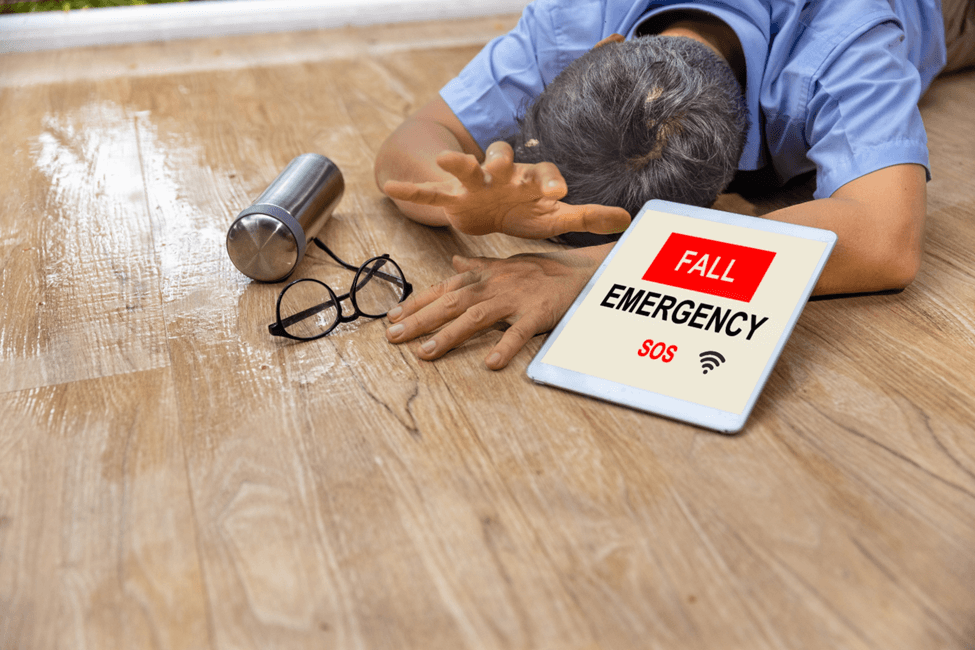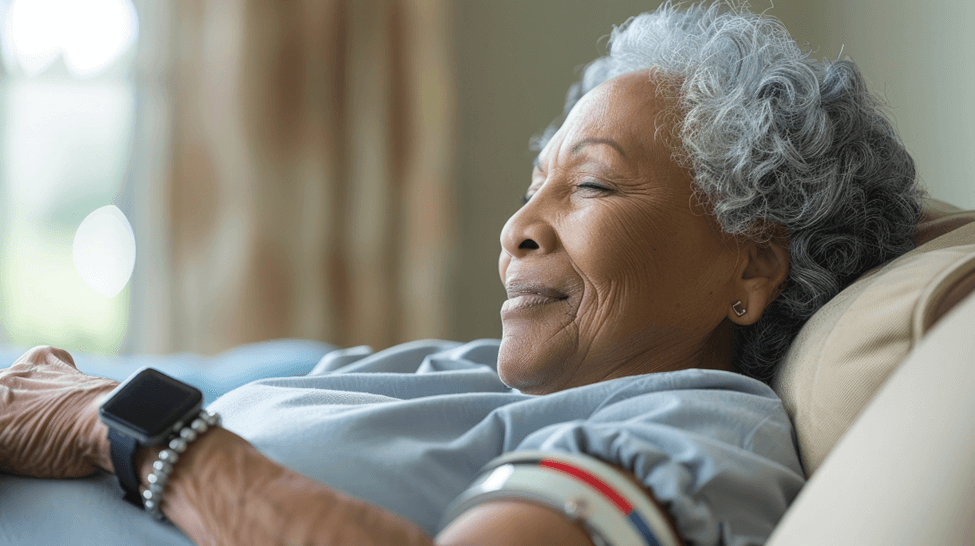How To Choose The Right Fall Detection Technology For Your Home
Keeping your elderly loved ones safe at home is a top priority, and fall detection technology can help you do that. With the rising costs of nursing homes, often reaching a staggering USD$10,830 per month and USD$5,806 per month for assisted living facilities, more seniors are choosing to age in place. This growing trend has led to a surge in innovative home safety solutions, with fall detection systems taking the lead. (1)
But how do you pick the right one for your needs? This post will outline everything you need to make an informed decision and ensure your family's peace of mind. Let's dive in!

Understanding fall detection technology
Fall detection devices are designed when a person has fallen and is unable to get up. These systems use a combination of sophisticated fall detection sensors and smart algorithms to distinguish between normal movements and actual falls.
Here's how they work:
When a fall is detected, the system springs into action. It can automatically send alerts to caregivers, family members, or emergency services, depending on how it's set up.
Acting fast is crucial when someone falls, as studies have revealed that the longer they stay on the ground, the higher the risk of complications. It's been reported that over 50% of elderly individuals who remain on the floor for an hour or more after a fall died within six months, even if they weren't injured from the fall itself. This serious statistic underscores the importance of quick detection and response. (2)
The types of fall detection systems
Different fall detection systems cater to various needs, lifestyles, and preferences. They can be categorized into two main types: wearable devices and non-wearable systems.
Wearable devices
Wearable fall detectors are small, lightweight devices that can be worn as pendants, wristbands, or clips. They're equipped with accelerometers and gyroscopes to detect sudden drops and changes in position. Some popular options include:
- Pendant-style devices: These hang around the neck and are easy to access in an emergency.
- Smartwatches: Many modern smartwatches include fall detection features alongside other health monitoring capabilities.
- Belt clip: This is attached to clothing and is less noticeable than other wearable options.
Non-wearable systems
For older people who may forget or resist wearing a device, non-wearable systems offer an alternative solution. These include:
- Floor sensors: Pressure-sensitive mats placed in high-risk areas can detect falls by monitoring changes in pressure.
- Wall-mounted sensors: These devices use radar or camera technology to detect falls without invading privacy.
- Smart home integration: Some systems connect with existing smart home devices to provide comprehensive monitoring.
As you weigh these options, consider which features are most important to you and how each system might integrate into your loved one's life.
The key features to consider
When selecting a fall detection system, you need to look beyond the basics and consider the features that will make the device not just functional but truly beneficial for your loved one's specific needs.
Here are some key features to keep in mind as you evaluate different options:
Automatic fall detection
Look for systems that can distinguish between normal movements and actual falls. This feature reduces false alarms and ensures help is summoned when needed.
GPS tracking
For older adults who are still active outside the home, GPS-enabled fall detection devices can provide location information to responders in case of an emergency.
Two-way communication
Some fall detection devices allow direct communication with monitoring centers or family members; this provides reassurance and quick assessment of the situation.
Water-resistance
Based on an analysis of fall statistics, 22.7% of falls among senior adults (65 years old +) happen in the bathroom. Thus, choosing a water-resistant device is recommended to ensure protection in all areas of the home. (3)
Battery life
Consider how often the device needs charging; longer battery life means less hassle and reduced risk of the system being unavailable when needed.
Ease of use
The system should be simple to operate, with a large help button and clear instructions for seniors who may have vision or dexterity issues.
Monitoring options
Decide whether you prefer 24/7 professional monitoring or family-based alerts. Professional services offer round-the-clock coverage but come with monthly fees, while family monitoring can be more cost-effective but requires constant availability.
Compatibility with existing systems
If you already have a home security or medical alert system, check if fall detection can be integrated to streamline your setup.
Take the time to assess and weigh these features against your specific situation to find the best possible match.
Assessing your loved one's needs
Every senior has unique needs, habits, and preferences that will influence which system will work best for them. Here's what to consider:
Mobility level
A more active senior might benefit from a wearable device with GPS tracking. Meanwhile, someone who spends most of their time at home might be better served by a comprehensive in-home system.
Medical conditions
Some health issues may increase fall risk or require specific features. So, take stock of any health issues and discuss with their healthcare provider how these might influence your choice of fall detection system.

Living situation
Do they live alone or with others? How often do they receive visitors? A senior living alone might need a more robust system with professional monitoring, while someone with frequent visitors or live-in family members might be fine with a simpler alert system.
Home layout
Take a critical look at your senior loved one's retirement home. Multiple floors, bathrooms without grab bars, or cluttered spaces might necessitate additional motion sensors or specific types of fall detection technology.
Wrap up
Deciding on the right fall detection technology for your home is a crucial step in looking out for your aging loved ones. By considering their needs, exploring different options, and setting up the system properly, you create a secure environment that encourages independent living and peace of mind.
References:
-
1. "The Cost Of Senior Care Is Rising While Caregivers Are 'Drowning' Without Help", Source:
https://edition.cnn.com/2023/04/20/health/senior-care-cost/index.html
2. "Fall Detection Devices and their Use with Older Adults: A Systematic Review" Source:
https://www.ncbi.nlm.nih.gov/pmc/articles/PMC4087103/#:~:text=Lying%20on%20the%20floor%20for,6%20months%20of%20the%20fall
3. "Older Adult Fall Statistics And Facts In 2024", Source:
https://www.forbes.com/health/medical-alert-systems/fall-statistics/